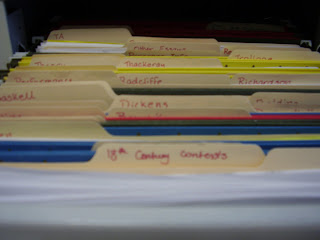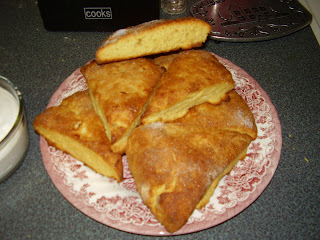I've been reading again, which should come as no surprise to anyone who knows me. My most recent read, as seen on the left, is Barbara Kingsolver's Animal, Vegetable, Miracle. In the book, Kingsolver and her family, who live on a farm in western Virginia, decide to spend a year eating locally. They raise their own produce and some of their own meat, obtaining their other food products from neighbors. They even make their own cheese.
This book comes in a procession of books about food that I have been reading, and this one in particular was recommended by my friend K. We had one of those moments of understanding when we both found we were trying to eat seasonally - I had been reading Michael Pollan's In Defense of Food and she had been reading Kingsolver.
While I find it quite unlikely that I will ever be able to completely sustain myself with any agricultural endeavors, I am trying to think about where my food comes from. As in, if it comes from California or Chile, then I probably don't want to eat it. If you think about it, these foods have been picked before their peak, chilled or stored, carted across the country (or the Western Hemisphere) and jostled onto a shelf at my grocery store. I have learned that it actually cheaper for grocery stores to buy produce from huge industrial food processers in CA, because they get tax credits that pay for the transportation (and all the gas, fossil fuels, etc that get burned in the mean time). And guess whose taxes pay for those? Yup. Ours. In the mean time, local farmers are having a hard time competing with the big guys, and it is almost impossible to find locally grown food in your local area.
There are a few options, however. The grocery store I do most of my shopping at carries milk from a dairy farm in a nearby town. The milk comes in glass bottles that you return to the store once you drink all the milk. I have seen the farm on the internet, and their cows actually get to walk around and eat grass (unlike most industrial cows).
We are also, as I have mentioned before, big fans of the farmer's market, where we find eggs, grassfed beef, bacon, and lots of fruits and vegetables. The only problem with this is that the Farmer's market is in the next county. Today, however, I stopped by a tiny produce store that I had noticed off the highway. It was amazing - they had almost everything I needed on my grocery list, including bacon, potatoes, apples, northern beans, squash, onions, and even cheese! And the prices were so much lower than those at the grocery store, I almost felt bad for the people I was buying them from. However, I imagine that I will be returning there again in the future on a regular basis.
So, here is my menu for the week, that is based on what's in season where I am:
Wednesday: salmon (obviously not local), brocolli, and brown rice (not local either, but with no gluten, I need carbs)
Thursday: leftovers
Friday: White bean and bacon soup, corn bread
Saturday: baked potaotes, brocolli
Sunday: cheese and squash quiche
Monday: shepherd's pie
Tuesday: leftovers
While I'm very serious about wanting to eat local, seasonal, and organic, there are also the needs to eat cheaply, easily, and gluten-free on a low budget with limited options. So, while it's not perfect, I think that it is a good start. Overall, my goal is not to adhere ridgidly to a list of legalistic food regulations, but merely to eat tasty, healthy foods, support my local economy, avoid the more perfidious aspects of industrialized food, and participate in/help to create a traditional food culture that is about nourishment, community, and connectedness with where food comes from, how it is grown, and who grows it.







